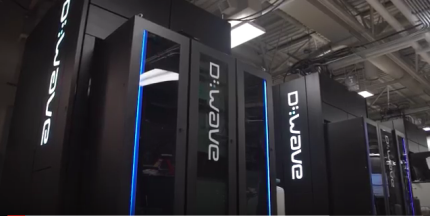Bomb lab acquires D-Wave quantum computer
Los Alamos National Laboratory, which helps oversee the U.S. nuclear stockpile, will use the D-Wave machine to study "quantum annealing."
Los Alamos National Laboratory, which helps maintain the U.S. nuclear stockpile, will acquire a quantum computer from D-Wave Systems Inc. as part of a National Strategic Computing Initiative launched by the Obama administration in July.
The Energy Department lab said this week it would acquire the quantum computer maker's 1000+ quibit D-Wave 2X system to be used by Los Alamos researchers along with university partners to explore applications for “quantum annealing.” D-Wave, based in Palo Alto, Calif., said it uses quantum annealing to solve problems by "tuning" qubits, or quantum bits, from their superposition state to a classical state. The approach returns a set of possible answers scored to show the best solution.
The Defense Department, the Energy Department and the National Science Foundation were designated as "lead agencies" for the computing initiative. Among other goals, the U.S. effort seeks to exploit new computing architectures as Moore's Law scaling of transistors on integrated circuits runs out of steam.
Quantum computing is among the approaches that could take up the slack as conventional high-performance computers reach the limits of scaling and performance per watt. The White House initiative and ongoing DOE efforts aim to create exascale computing systems capable of at least 1 exaflop, or 1 billion billion calculations per second.
The Los Alamos Weapons Physics Directorate relies on high-performance computers to help simulate the behavior of nuclear weapons. The simulations can help gauge nuclear bomb performance and yield.
"We expect to be able to accelerate the pace of quantum software development to advance the state of algorithms, applications and software tools for quantum computing," D-Wave President Robert Ewald said in a statement.
D-Wave also claims its superconducting processor generates almost no heat, thereby reducing power requirements to less than 25 kW. By contrast, current supercomputers require megawatts of power, making them much harder to scale.
The Defense Advanced Research Projects Agency also has funded university research into quantum computing. NASA, which installed a D-Wave 2X system earlier this year at its Ames Research Center at Moffett Field, Calif., also is working with Google and the Universities Space Research Association.
Elsewhere, Lockheed Martin was one of the first customers for the D-Wave Two system and Microsoft also in investing in quantum computing technology.
Despite heavy U.S. investment in quantum computing and underlying quantum dot technology, benchmark testing of the D-Wave Two system last year found it to be no faster than traditional supercomputers for some computations. Proponents of the technology disputed the benchmark results.
D-Wave said it expects to install its 2X system at the DOE lab in New Mexico in early 2016.
